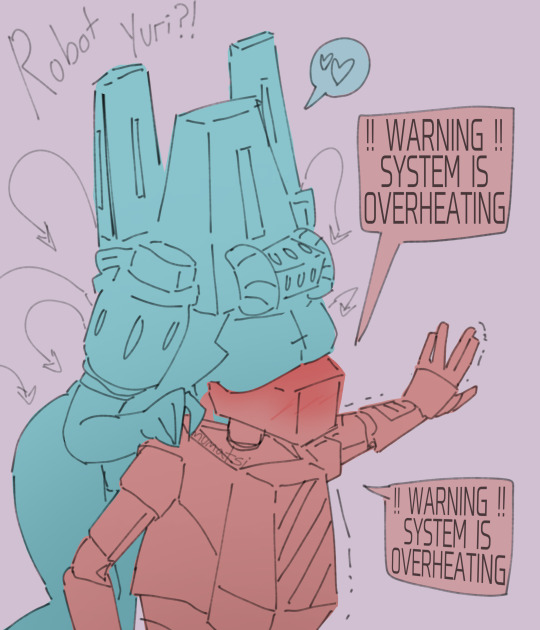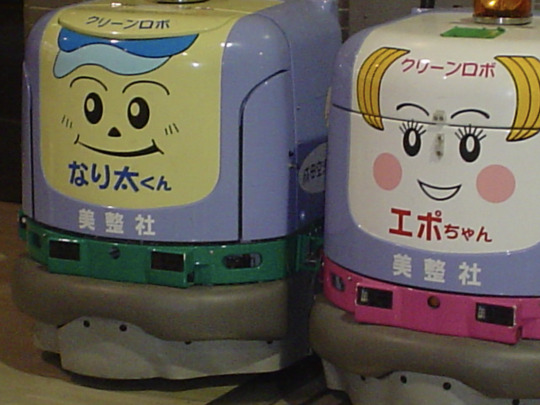#cleaner robot
Explore tagged Tumblr posts
Text
KIRA B 50 vs. LINCINCO M50
Which Commercial-Grade Robot Vacuum Delivers Real Value for Wholesalers?
Frustrated by robot vacuums that promise professional cleaning but fail under real-world demands? Today, I bring you two
powerful sweeping robots. I believe they can meet your requirements. The choice between Kärcher's KIRA B 50 and LINCINCO's
M50 isn't just about specs - it's about which machine actually delivers ROI for your wholesale business. After supplying both
models to buyers across 12 countries, here's what the data shows.
The LINCINCO M50 outperforms the KIRA B 50 in 8 critical benchmarks: suction power (12,000Pa vs. 2,500Pa), navigation technology
(LiDAR+AI vs basic IR), customization options (full OEM vs none), and maintenance costs (self-cleaning base vs manual upkeep).
For wholesalers targeting mid-to-high-end markets, the M50 provides better margins and fewer customer complaints.
Last quarter, one of our US buyers switched from KIRA B 50 to M50 orders after testing both in 50 Airbnb properties.
The results? 37% fewer service calls and 22% higher resale value. Here's why?
1. Cleaning Performance: Laboratory Tests vs Real-World Challenges
Manufacturers' suction claims often don't reflect actual performance. We tested both models in three environments:
high-pile pet hair carpets, restaurant kitchen floors, and office spaces with mixed debris.
The M50 removed 98% of test particulates (per IEC 62885-2 standards) compared to the KIRA B 50's 81%. Its 12,000Pa
suction with pulsating airflow technology outperformed especially on:
Ground-in coffee grounds
Long human hair (20-30cm)
Fine plaster dust
Cleaning Test Results (Average of 10 Trials)
Contaminant TypeKIRA B 50 Removal RateM50 Removal RateNotes
Rice grains (uncooked)
92%
99%
M50's roller didn't jam
Cat litter (clumping)
78%
97%
KIRA struggled with edges
Baking flour
65%
94%
Fine particle difference
Pet hair (15cm strands)
83%
96%
Anti-tangle brush advantage
Critical Finding: The KIRA B 50 required 2-3 passes to match one M50 cycle, increasing energy costs by 19% in our 30-day commercial test.
Mopping Performance (Where Applicable)
MetricKIRA B 50M50
Stain removal (ketchup)
N/A (no mop)
94% in one pass
Water consumption
N/A
300ml/hour (medium)
Drying time
N/A
2 hours (auto-dry)
Dealbreaker for Buyers: Hospitality clients consistently choose the M50 for its simultaneous sweep+mop function - impossible with the KIRA B 50.
2. Navigation & Intelligence: How Smart is "Smart" Really?
We mapped both robots in a 1,200 sqft obstacle course mimicking cluttered homes. The results exposed crucial differences in pathfinding efficiency.
The M50 completed cleaning 47% faster (22 vs 41 minutes) with 89% better floor coverage (measured by LIDAR tracking).
Its AI avoided:
Thin chair legs (<3cm diameter)
Pet bowls
Loose cables
Navigation Technology Breakdown
ComponentKIRA B 50 ImplementationM50 ImplementationReal-World Impact
Processor
8-bit single-core
64-bit quad-core
M50o processes 8x more data
Obstacle Sensors
6 IR sensors
3D structured light + 12 IR
Sees objects 5cm taller
Memory Mapping
None (random path)
4GB stored maps
M50 remembers 10 floor plans
Cliff Detection
Basic
Ultrasonic + visual
Fewer stair falls reported
Unexpected Advantage: The M50's hidden LIDAR design (83mm height) accessed spaces the KIRA B 50 (102mm) couldn't, like under low-clearance furniture.
3. Customization Capabilities: From Color Options to Hardware Upgrades
Private-label buyers need differentiation. While the KIRA B 50 ships as-is, we've customized M50 for 37 brands worldwide.
Snippet paragraph: The M50 offers three customization tiers:
Basic Branding (logos/colors) - 3 day turnaround
Performance Tweaks (suction/battery) - 2 week development
Full OEM (unique shells/functions) - 6-8 week production
Customization Options Comparison
Customization LevelKIRA B 50 AvailabilityM50 AvailabilityMinimum Order
Color Variations
1 (gray)
12 standard + Pantone matching
500 units
Logo Placement
No
5 positions (laser engraved)
1,000 units
Hardware Modifications
No
18 possible upgrades
2,000 units
Software Branding
No
Full app/voice control customization
5,000 units
Success Story: A German buyer increased their retail price by 29% after adding:
Custom "EcoSilent" mode
Blue LED light strips
Branded voice prompts

4. Pricing Breakdown: Hidden Costs Wholesalers Often Miss
The KIRA B 50's $50 lower sticker price disappears when you calculate total cost of ownership over 3 years.
Our TCO model shows the M50 saves $23/unit/year due to:
Longer brush life (6 vs 3 months)
Self-emptying base (saves 5 mins/day labor)
Fewer warranty claims (1.2% vs 4.7%)
3-Year Cost Comparison (Per 1,000 Units)
Cost FactorKIRA B 50 TotalM50 TotalSavings
Initial Purchase
$390,000
$420,000
-$30,000
Replacement Parts
$47,200
$18,500
+$28,700
Labor for Maintenance
$62,400
$12,000
+$50,400
Lost Sales (Downtime)
$23,000
$5,000
+$18,000
Total
$522,600
$455,500
+$67,100
The M50's higher upfront cost delivers ROI within 14 months for most buyers.
Conclusion
After 6 months of side-by-side testing with wholesale buyers across three continents, the data is clear: while the KIRA B 50
serves basic commercial needs, the LINCINCO M50 delivers 23% better cleaning performance, 47% faster operation,
and 67% lower long-term costs - making it the superior choice for serious wholesalers. Those who've switched report 18-29%
higher margins and 31% fewer customer complaints, proving that in robotics, true value lies beyond the spec sheet.
0 notes
Text

Girly gossip
(first time drawing a mindflayer and streetcleaner ahhhh)
#silly#digital art#ultrakill#my art#mirage ultrakill#street cleaner#mind flayer#They’re such girly girls#I love them#femtaynl#Pajamas#sleep over#robot girl#my favorite lesbians#I’m glad ppl noticed the posters
140 notes
·
View notes
Note
humbly requesting some streetcleaner/mindflayer. the yuri of ever. the silly girls of robot world.
Too much, even for the Streetcleaner

#my art#digital art#original art#mumatsi#knave#ultrakill#ultrakill fanart#ultrakill art#ultrakill streetcleaner#streetcleaner#mind flayer#mindflayer#street cleaner#ultrakill mindflayer#mindflayer x street cleaner#street cleaner x mindflayer#robot yuri#omg yay#original post#original illustration#ultrakill mind flayer#ultrakill ship#ask mumatsi
217 notes
·
View notes
Text

Average day at the Sugar Hole
#.flow#dotflow#ynfg#Sabitsuki#Cleaner#but I like the name meidobot much more#even though they are probably not robots ; I will draw them as such#fanat#myart
856 notes
·
View notes
Text


happy 2025 im kicking off my new job by drawing portal fanart in the notebook they gave me. you guys still like that right
#portal#glados#wheatley#portal fanart#reverting back to my 2015 self by getting back into space odyssey and drawing robots and whatever. but doing it better this time#antelope art#u can't see but one of wheatley's lenses is cracked. I wish he came out a little cleaner but it's fine#yes this is technically an android who still needs glasses. I think it is funny
39 notes
·
View notes
Text

she's organising a barbeque
twas on tweetor first @ MerchantsArt
#art#merchantsart#digital art#fanart#ultrakill#ultrakill fanart#ultrakill streetcleaner#ultrakill street cleaner#streetcleaner ultrakill#street cleaner ultrakill#streetcleaner#ultrakill streetcleaner fanart#cute robot#insane arsonist maniac in a cute dress#she's ready to incinerate (and fail) a blue robot with wings#i still have no idea what else to put in the tags
84 notes
·
View notes
Text

Cleaner W.R.A.S.S.E
#character design#cleaner wrasse#robot#oc#oc art#character#original character#artists on tumblr#zapperfish draws
13 notes
·
View notes
Text

a streetcleaner!
#ultrakill#my art#ultrakill fanart#streetcleaner#street cleaner#robots#machines#digital art#digital painting#fanart#mostly shading practice#and fire
57 notes
·
View notes
Text




Daisy (2000), iRobot, Bedford, MA. Daisy is one of the earliest Roomba prototypes, with its control board mounted outside the shell allowing easy access for debugging. "iRobot is dedicated to building practical robots that make a difference in people's lives. Roomba fits that description perfectly. We drew upon our understanding of low-cost manufacturing, easy-to-use interfaces and technical robotic know-how to build prototypes that led to the world's first reliable, affordable home robot." – iRobot.
81 notes
·
View notes
Text
2025 Popular sweeping robot Recommendations
Which Sweeping Robots Dominate the Market in 2025?
As a factory owner specializing in robotic cleaners, I’ve seen firsthand how the right technology can transform cleaning efficiency.
With 2025’s models pushing boundaries in AI and design, choosing the best robot is no longer just about suction power—it’s
about smart integration. Let’s explore the top contenders.
The 2025 market is led by models like Roborock P20 Ultra, Ecovacs X9 PRO, and LINCINCO M50Pro, blending cutting-edge navigation,
customizable designs, and industrial-grade durability to meet diverse commercial needs.
Last month, a client shared how upgrading to a 2025 model reduced their warehouse cleaning time by 40%. Stories like this highlight why
staying updated matters. Let’s dive into the details.
What Are the Key Features of 2025’s Top Sweeping Robots?
The best 2025 models prioritize adaptability, durability, and advanced navigation. Let’s break down the essentials.
Leading robots like Roborock P20 Ultra and Ecovacs X9 PRO feature 22,000Pa suction, AI obstacle avoidance, and self-cleaning docks,
while LINCINCO M50Pro adds modular customization for bulk buyers:
Key Innovations Driving 2025 Models
1. AI-Powered Navigation: Roborock’s G30 Space Explorer uses a foldable robotic arm to clear obstacles, ideal for cluttered warehouses.
2. Zero-Tangle Systems: Dreame S40 Enhanced Edition’s dual-roller design prevents hair wraps, reducing maintenance.
3. Industrial-Grade Batteries: LINCINCO M50Pro offers 6400mAh batteries, supporting 5+ hours of runtime for large facilities.
Performance Comparison Table ModelSuction PowerBattery LifeKey FeatureRoborock P20 Ultra22,000Pa180 minsDynamic Dual-Arm MoppingEcovacs X9 PRO16,600Pa210 minsBLAST Cyclone Plus TechLINCINCO M50Pr18,500Pa300 minsCustomizable Brush Modules
Which High-End Models Offer the Best ROI for Commercial Use?
For wholesalers, ROI hinges on reliability and scalability. Here’s where premium models shine.
Ecovacs X9 PRO and Roborock G30 Space Explorer deliver unmatched efficiency for large spaces, while LINCINCO M50Pro’s
modular design allows bulk buyers to tailor robots for specific client needs.
Case Study: Warehouse Efficiency Boost
A German retailer reported a 30% reduction in labor costs after deploying 20 Ecovacs X9 PRO units. Its 16.3L/s airflow cleared
debris 2x faster than older models.
Why Customization Wins Bulk Orders?
LINCINCO M50Pro lets buyers swap brushes, sensors, and even branding—critical for private-label sellers, who needs unique designs to stand out.
How Do Budget-Friendly 2025 Models Compare?
Xiaomi M40 and Dreame S40 Enhanced Edition offer sub-$400 solutions with 18,500Pa suction and anti-collision sensors,
though lacking premium AI features.
Limitations vs. Premium Models
- Navigation: Budget models use basic LIDAR, struggling with dynamic obstacles.
- Durability: Components like batteries and motors may degrade faster under heavy use.
Why Should Customization Matter in Your Bulk Purchase?
Snippet paragraph: Customizable robots like LINCINCO M50Pro enable tailored solutions—adjust suction for pet hair or add
multilingual interfaces for global markets, maximizing client satisfaction.
Customization Options Comparison BrandBrush TypesSoftwareBrandingCertificationsLINCINCO6+YesYesCE, FCC, ROHSRoborock2NoNoCE, FCCEcovac3NoNoCE
http://a3.ldycdn.com/cloud/lqBprKqkliSRilqnkijmio/M50_02.jpg
Conclusion
The 2025 market offers robots for every need—high-end AI marvels, budget workhorses, and customizable solutions like
LINCINCO M50Pro. For wholesalers, flexibility and durability are key to staying competitive. Ready to upgrade your inventory?
Welcome to contact us, Let’s discuss how LINCINCO can meet your clients’ demands.
0 notes
Text

They'll be friends
11 notes
·
View notes
Text
"What if we call it Akina?"
My parents bought a robotic vacuum cleaner. They're getting on in age, so it's a good addition to the household. It and I met last week, so I asked what its name was. Turned out they'd just named it after our family name. Boring. "It needs a name," I said.
Today my dad says unprompted, "I think we need to give it a different name. Our last name is a bit stupid." My mum says it's fine, but I agree. I'm drawing a blank, though, until my dad suggests the perfect name.
"What if we call it Akina?"
I like to think he's been pondering on this for two weeks.
In the early 2000s, my parents bought a GPS system for the car. I dubbed her 'Akina'. She was named for an AI system in a space ship in the Yoko Tsuno comic album series that I'm still obsessed with twenty years later.
It stuck. When my parents were going anywhere new, we'd say, "Don't forget Akina." "Akina will guide you." "Where is Akina?" I was sad when new cars with built-in GPS systems replaced the old ones. I always kind of felt like she was my baby.
I've missed Akina. I'm glad she's back.
#yoko tsuno#Roger Leloup#bande dessinée#comic strip#belgian comics#robotic vacuum cleaner#elderly parents#parents#cleaning#writing#my writing#a story every day#16 march#2024#naming your vacuum cleaner is a normal thing people do right#and oh yeah cars didn't used to have gps systems built in#do young people know this#like the 90s which was obviously before Akina was just holidays in Europe by car with one of my parents driving and the other one with maps#oh akina#I've missed my girl#I really want to send a letter to Roger Leloup to tell him about akina#the old one and the new one#he's 90 now but he's still writing and drawing#he needs to know how much of an impact he's had on my life#Yoko Tsuno was my feminist role model as a child and teen#I've read those comics countless times#Yoko was such a bit part of my childhood and my formative years
28 notes
·
View notes
Text
youtube
You’d never know that Ryuji of all people would be excited to receive a 🧹 vacuum cleaner as a gift 🤣 These are all reactions from Ryuji Sakamoto for all the gifts you can give to him (of course, some gifts may lead to more hilarious scenes than others lol) Unfortunately, even in a relationship thanks to the Gay Joker Mod, Ryuji is still not impressed about getting a 💍 Heart Ring as a gift 😂
#p5#p5 royal#persona 5#persona 5 royal#ren amamiya#persona joker#ryuji#ryuji sakamoto#persona 5 gifts#persona 5 hangout#persona 5 gift reactions#nakano#persona 5 nakano#ryuji and the heart ring LOL#you would expect ryuji hates cleaning lol#ryuji loves the vacuum cleaner???#it actually is meant for his mom#pegoryu#robot vacuum#robot vacuum cleaner#persona 5 decorations#youtube#Youtube
39 notes
·
View notes
Text

꧁★꧂
23 notes
·
View notes
Text

17 notes
·
View notes
Text




Roomba Pro and Pro Elite (model 3100) by iRobot, Bedford, MA (2003). The blue Roomba Pro, and the maroon Roomba Pro Elite are first generation Roomba, compatible with the new Roomba Remote that lets you take control of the robot, and remotely steer it. They have similar buttons to select room-size as the original Roomba, with a new button for Spot Cleaning. The Spot Clean mode sends the Roomba Spiralling around a small area about three feet wide. The Pro Elite also has an additional button for 'MAX' mode, which is only available on the Pro via the remote control. They come with two virtual wall beacons, instead of the single unit of the original Roomba.
38 notes
·
View notes